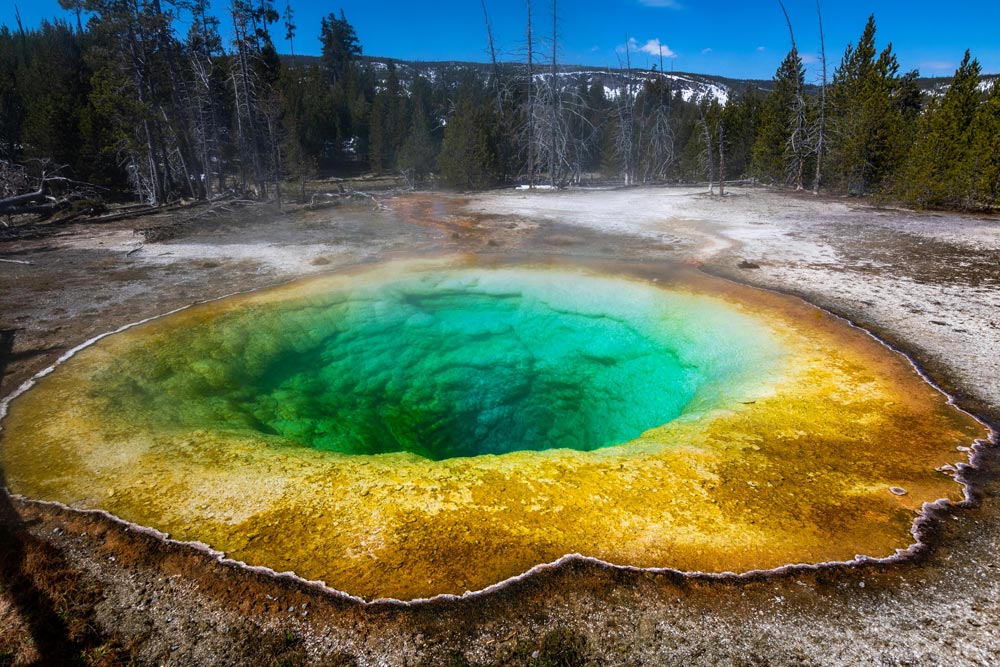7th Annual Holiday Toy & Book Event Help make the holidays brighter this year!
Tourists Are Destroying Yellowstone National Park’s Natural Wonders
Matthew Russell
Yellowstone National Park, a destination many dream of visiting, covers 3,472 square miles and offers breathtaking natural beauty. But as crowds surge each year, the park is facing an existential challenge: tourists.
With over four million visitors annually, human impact on the park’s fragile ecosystem is growing more evident. Tourists, whether through carelessness or ignorance, pose a serious threat to the preservation of this natural wonder. The impact of their behavior is widespread, from damaging geothermal features to endangering wildlife.
The Consequences of Graffiti and Litter
Tourists who fail to follow park rules can cause lasting damage. Recently, a ranger at Yellowstone was photographed scrubbing graffiti near the iconic Old Faithful geyser. The drawings, which included smiling faces and scribbled messages, defaced a natural pool that has existed for thousands of years. Rangers spend valuable time cleaning up after these acts of vandalism.
As one Instagram user noted, “People are unbelievable in this park,” lamenting the disrespect shown to the park’s natural beauty.
Littering is another growing concern. Morning Glory Pool, once a brilliant blue thermal spring, has now changed color due to years of tourists throwing coins, rocks, and trash into it. The debris blocks the pool’s natural conduits, cooling the water and allowing bacteria to grow, altering the once-pristine blue to murky greens and yellows.
“People didn’t understand the plumbing and how geysers worked,” park historian Alicia Murphy told the New York Post.

Wildlife in Danger
Interacting with wildlife is one of Yellowstone’s main draws, but it’s also one of the most dangerous aspects of the park. In 2016, a father and son tried to kidnap a bison calf, thinking it was cold. Tragically, the calf was later euthanized because it could not be reunited with its herd, Unofficial Networks reports.
The National Park Service strictly advises visitors to stay at least 25 yards away from bison and 100 yards from bears and wolves, yet violations occur frequently. Tourists often ignore these rules, with some even risking their lives to snap a close-up of a bear or bison. One recent incident saw a group of visitors ignoring park ranger warnings to back away from a grizzly bear, coming within a dangerously close distance.
The consequences of these interactions aren’t just dangerous for the tourists. Animals like bears and bison can become aggressive when humans invade their space, and park officials often have to euthanize animals that have harmed people. Additionally, these behaviors can disrupt natural wildlife patterns, potentially putting entire species at risk.

The Threat to Geothermal Features
Yellowstone’s geothermal wonders are a major draw for visitors, but they also face threats from careless tourists. The park’s geysers and hot springs are delicate ecosystems, and stepping off designated paths can cause irreversible damage. A tragic example of this occurred when a tourist ventured off the boardwalk and fell into a hot spring, suffering fatal burns, Outside Online reports. The ground around these geysers may look solid, but boiling water often lies just beneath the surface.
Tourists also disrupt these features by throwing objects into them. Coins, rocks, and even car parts have been found in geothermal pools like Morning Glory. Former ranger Jeff Henry recalled using fire trucks to pump water out of the pool and then fishing out objects like hats and thousands of coins, according to Men's Journal.
Can Yellowstone Be Saved?
While tourists flock to Yellowstone to marvel at its beauty, their actions—whether intentional or not—are slowly destroying the very park they came to admire. Rangers do what they can to mitigate the damage, but the sheer volume of visitors makes it an uphill battle. Education and stricter enforcement of park rules could help, but many experts believe it’s already too late to reverse some of the damage.
Still, there is hope. Some visitors are becoming more conscious of their impact, and park officials report fewer instances of littering in recent years. But the key to preserving Yellowstone lies in a collective effort.
“I don’t see anywhere near as many coins in pools as I used to back in my early days in the park,” Henry told the New York Post. “The bottoms of the more accessible springs used to be paved with coins, but now it’s pretty rare to see anything thrown into the pools.
“I think people are much more respectful than they were in my early days,” Henry said. “It’s one way that values and behavior have changed over the years.”
The danger tourists pose to Yellowstone is undeniable. From harming wildlife to damaging geothermal features, their impact is widespread. For those who wish to experience the park’s wonders, respecting the rules is the only way to ensure that future generations can enjoy Yellowstone’s beauty as it was meant to be.
Click below to take action and keep Yellowstone beautiful!


